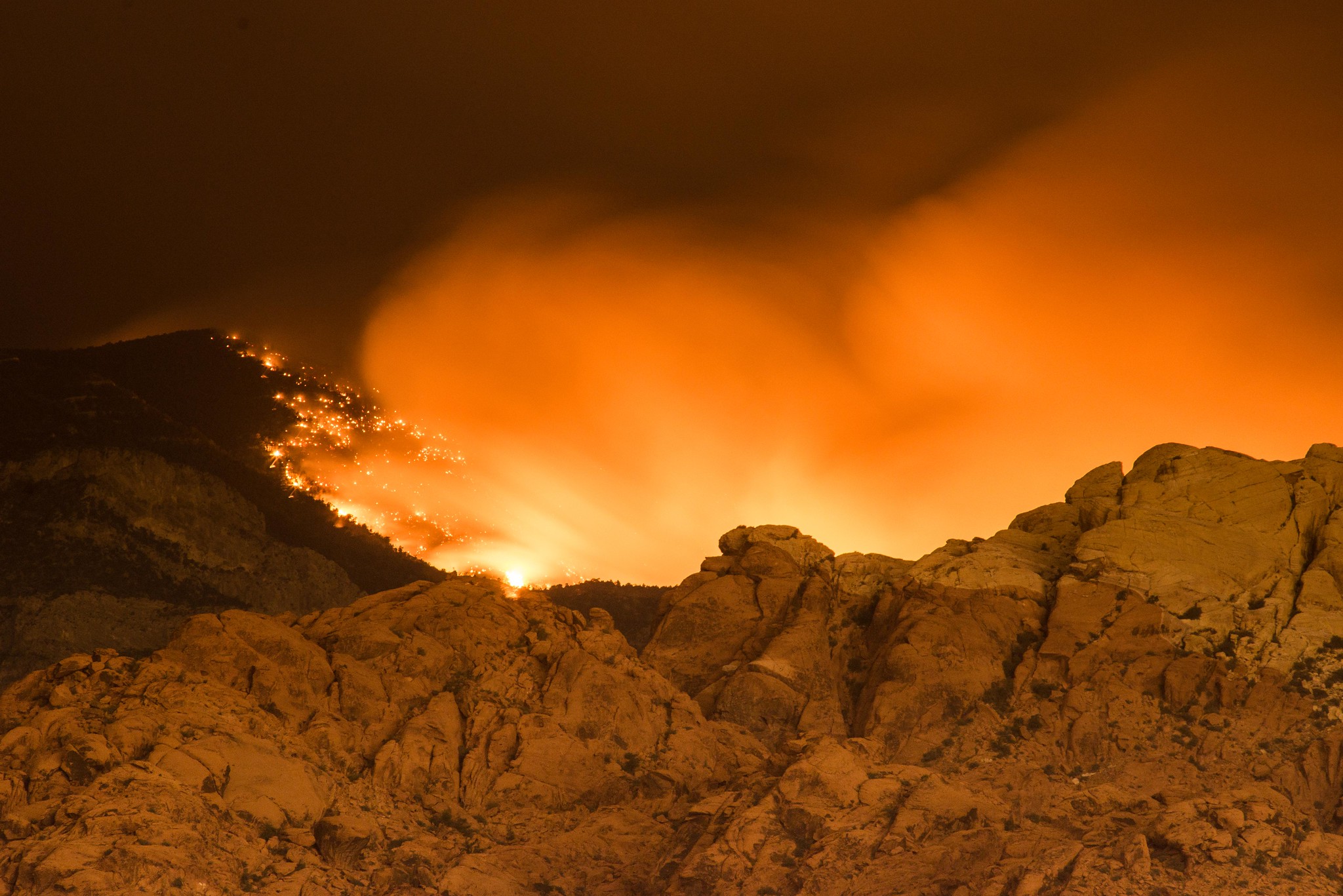To thwart wildfire ignitions from power lines, NV Energy could temporarily cut power to residents

Over the past year, electric utilities across the country have watched as damages arising from two years of devastating wildfires drove California giant Pacific Gas and Electric into bankruptcy. Wildfire managers have long warned against campfires and fireworks in dry forested areas. Now they are increasingly focusing their attention on blazes started by utility-owned power lines.
The California Department of Forestry and Fire Protection found that PG&E’s equipment caused 17 major fires in 2017 and the 2018 fire that tore through the small town of Paradise, killing 85 people, destroying thousands of homes and decimating its economy. In June, the utility agreed to pay a $1 billion settlement, but it still faces $30 billion in potential liabilities, according to the Associated Press. Even before that deal, other utilities, including NV Energy, were watching.
“More and more people are living near the infrastructure that is sitting in the fuel [that is driving fires],” said Kevin Geraghty, a senior vice president for operations at NV Energy.
“And the fuel is becoming worse and worse every year,” he added.
In June, the state’s largest utility announced, for the first time, that it would consider temporarily cutting off power to customers if there is a high risk of fire in mountainous areas like Mt. Charleston and Lake Tahoe. Geraghty said that, according to the utility’s modeling, it’s unlikely that there will be more than one planned outage per year. But he said that the precaution — de-energizing its power lines — could help protect residents from severe fires.
Geraghty said there is a lot the utility cannot control, but it can attempt to drawdown the risk of fire when weather conditions create high-risk fire conditions. Utility-caused fires can start when high wind causes power lines to collide or when a mylar balloon collides with the grid.
“The only [way] for us to control an ignition during a [high-risk fire] event is to de-energize,” he said.
The move came weeks after Nevada lawmakers passed Senate Bill 329, legislation requiring utilities to create a natural disaster protection plan to address, in part, wildfire. The plans could also address summer monsoons that can leave Las Vegas ratepayers without power. In addition to asking utilities to describe their plans for reducing fire risk, the bill text asks utilities to look at ways to manage the vegetation that fuels wildfires. The Public Utilities Commission has asked utilities to submit comments by July 17 on a docket for creating regulations to implement the legislation. The commission will host a workshop on the issue on August 20.
During the bill signing ceremony in May, Gov. Steve Sisolak called the legislation “an up-front investment that utilities will make to protect themselves and ratepayers from higher costs in the event of damage from a natural disaster.” He added that “studies show that investment in reducing the risk of wildfires has a proven cost savings ratio of at least three-to-one.”
But the preventative program that NV Energy rolled out in June precedes the plan, something that Geraghty said the utility has been considering since early 2018. A temporary public safety outage action, which the utility describes as a “Public Safety Outage Management” event, or PSOM event, will be triggered depending on wind speed, fire science and fuel conditions.
The day before Sisolak signed the natural disaster planning legislation, federal and state land managers briefed him on fire risk heading into the 2019 season. The state has seen an average of 500,000 acres burned annually between 2000 and 2018. Most of the state’s fires are not the work of nature. Last year, more than 56 percent of fires were caused by human ignitions.
NV Energy is not alone in considering temporary outages. Utilities across the West have notified customers that they will take similar actions to prevent utility-caused wildfires.
In late June, Southern California Edison told thousands of customers that it could power down its lines, according to a local CBS affiliate. An Oregon utility said it might also shut down power “as a last resort,” the Salem Statesman Journal reported. And the San Jose Mercury News reported that PG&E notified customers in June that in at-risk areas, they could lose power for five days at a time.
“There is no doubt more and more utilities are looking at this,” Geraghty said.
But he said NV Energy’s planned outages would likely be shorter — a matter of hours, not days. Customers, he said, would receive 48 hours of notice before an event is triggered. And although the events could coincide with some of the hottest summer days, Garaghty stressed that they would occur in areas at higher elevation where the weather is cooler even in the summer.
Already, the utility de-energizes its lines in Northern Nevada, where massive rangeland fires tore through sagebrush and ranches in 2017 and 2018, burning hundreds of thousands of acres. The difference is that the area is less densely populated than places like the Tahoe Basin. Much of northeastern Nevada, the site of those massive fires, is served by rural electric cooperatives.
In June, California utility regulators created new rules for public safety outages. The rules said utilities must have justification for why an outage was necessary, and that they should only be implemented as a last resort. At the same time, the Sacramento Bee reported that California Gov. Gavin Newsom outlined a $24 billion “insurance fund” to fight fire and stabilize its utilities.
When asked why NV Energy acted before the natural disaster plan was complete, Geraghty said “the risk is here now” and the utility had planned to act regardless of what the Legislature did.
“There is a lot to be learned about what happened in California,” he said.
